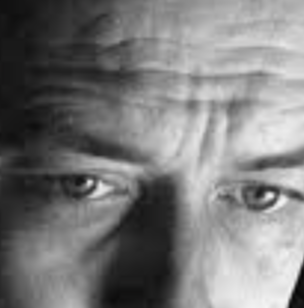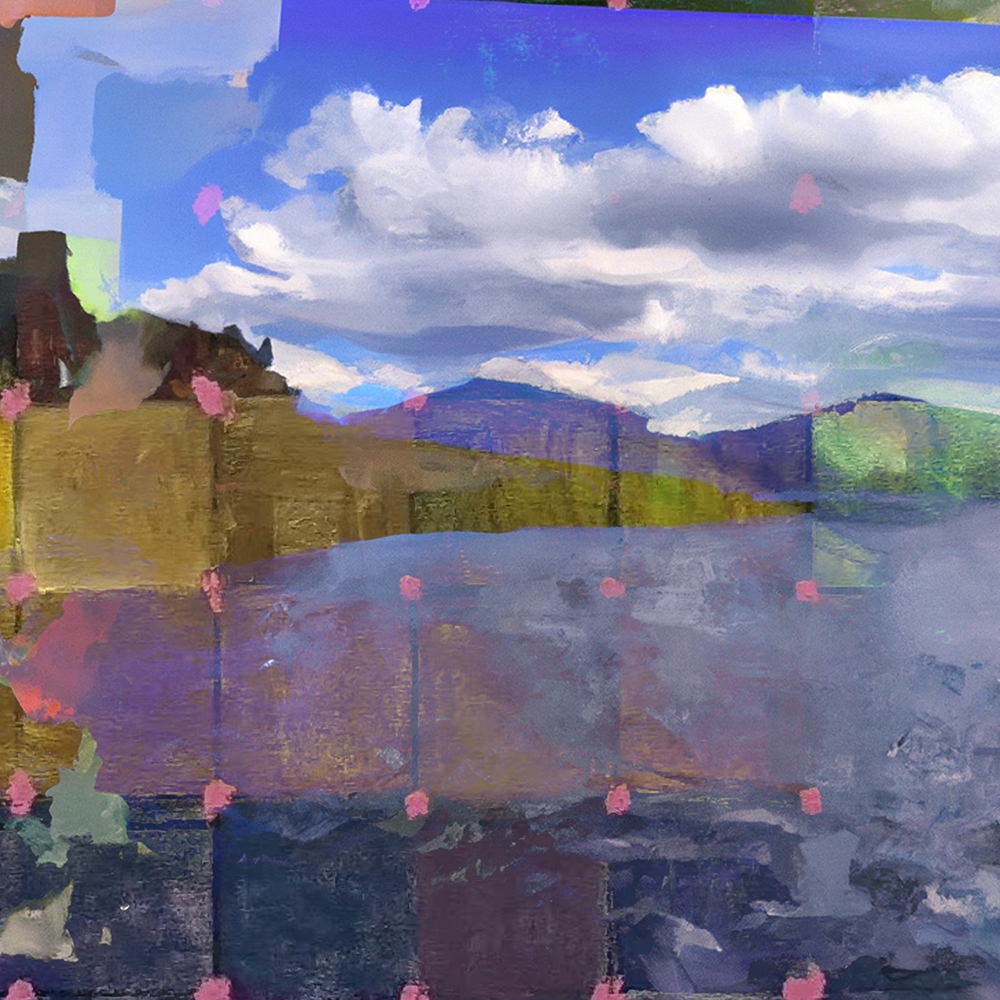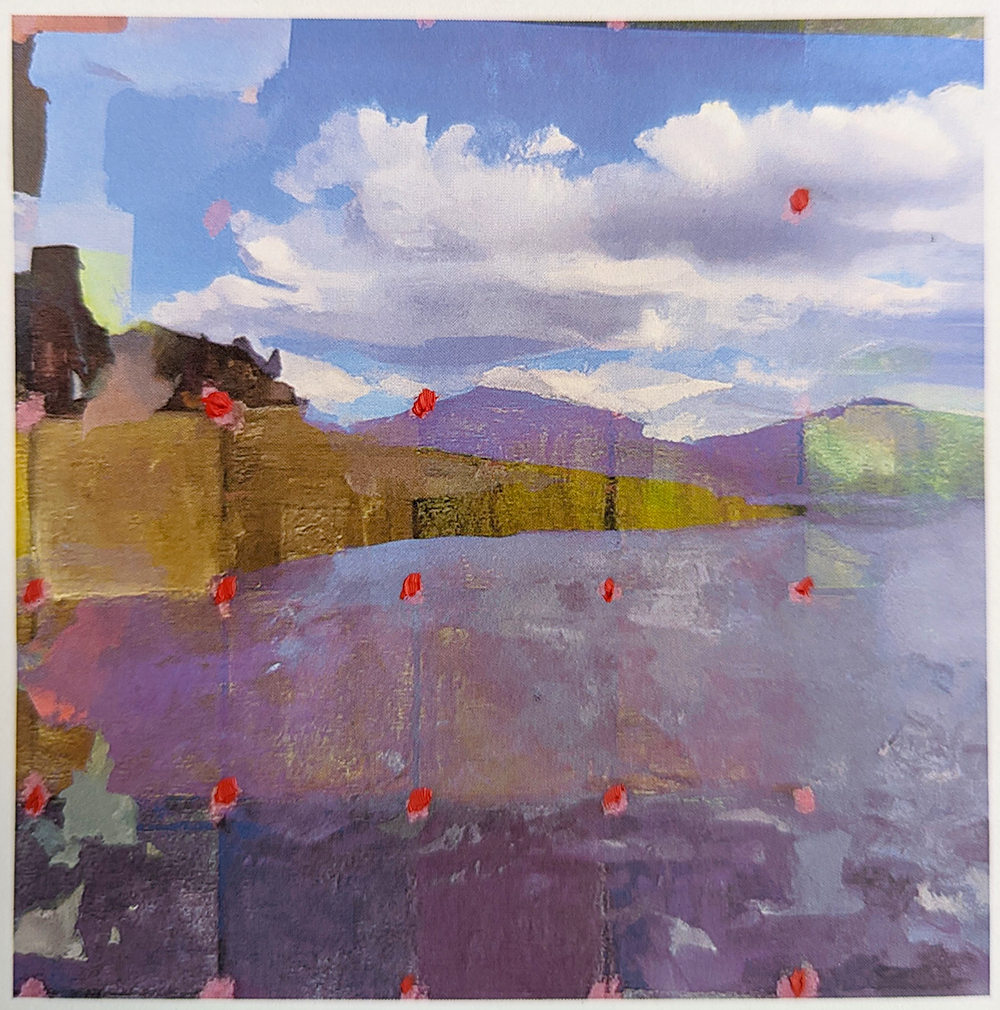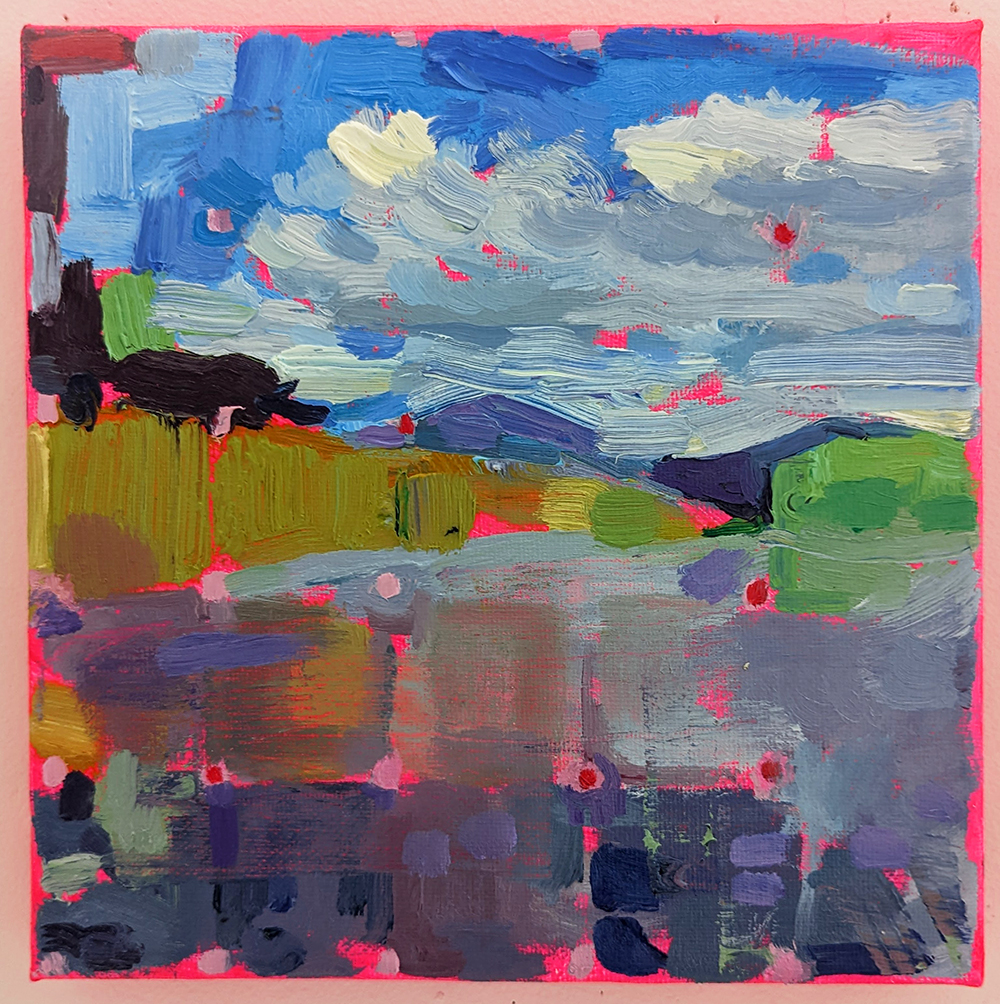29 Nov Through a glass darkly
It’s becoming more apparent quite how much and to what extent my smartphone’s presence has changed my interaction with the world. Perhaps this is less about my experience of landscape and more about how I negotiate every interaction.
I have installed cameras in my home, and I can, at the tap of my smartphone screen see both my front and back door on live camera. I see occasional glimpses of my pets, that my phone labels “animal detected”; I see my kids get home from school, helpfully labelled “person detected”. It is the real world reflected at me but not quite. The image is maybe reflected darkly – a lag, fisheyed and a bit blurry. The world of my home condensed to two very small portals of its entrances. The image is gltchy and imperfect but it is also my understanding of this that is dark. What does it mean that I can see this image? How does it change my whole day? That I can know that my home is unoccupied, the animals sleeping, my kids not home. I can see what the weather is like, I can know that there’s no fire, that I didn’t forget to shut the door. Does this assuage anxiety or cause it? Did I even think that there was a real possibility of a fire or forgetting to shut the door before I had the camera? It is not only passive viewing though. I can set off an alarm should I choose to. If the phone tells me that there is a “person detected” I could trigger an ear-bleedingly loud siren using my smartphone: I could call the police. So now my phone isn’t just a camera, a phone, a microcomputer, it’s a continual link to home, a security system. The implications of these things must be huge, and as social and cultural and psychological phenomena well outside my research. But painting can explore these new images, these developing and shifting experiences. These interactions through the glass of the smartphone. What are the darknesses that in my day-to-day life I don’t even see?
I see the convenience of each added app, of having ever-increasing access to tools to negotiate all sorts of chores and applications. I sometimes see the negatives of it too. My phone dies and I can’t do anything. Can’t park, can’t pick up my kids from wherever it was they had said they were going. We’ve outsourced a lot to these devices. It rings at inopportune times and it’s really difficult to ignore it. It increases anxiety over the potential to lose information forever, to miss something, to press the wrong button, to delete the wrong thing.
In the studio, I am thinking about potential blindspots in my own smartphone usage, my inability to see the medium through which I seem to be processing an increasing amount of my life. I find myself cropping images to squares, or to the dimensions of my phone photos. I look through the images that I have on my phone, a selection of things I thought interesting enough to record. That with a quick snap, I could be comforted that that image is saved and available on my computer, on the frame of my Google Home in the kitchen. Screenshots of things I wanted to share. Photos of lists or details of business cards that I want to keep safe. Memes, flight details, things I couldn’t read and needed to zoom in on, Christmas present ideas, food and fancy cocktails, photos of my dogs, a pained existentialist.
My smartphone has become a repository for all sorts of images, the lines of any kind of hierarchy totally blurred. My holiday snaps along with documentation of my work along with memes and other ephemera. Screenshots and never to be repeated photographs of my kids as babies. Other people’s work that I have saved that finds itself filed and saved as if it is my own. My husband’s photos that somehow find themselves on my photo reel, and places I’ve never been that find their way onto my maps. (I sometimes look and think it is my memory that is wrong and that the record of these photos must mean I was there.). These images are collected intentionally as I think about this project and unintentionally as I send screenshots to my brother, memes to my daughters,
I can use any of the images I have on my phone, and on my computer and manipulate them into manageable and pretty little canvases. Combining digital images and photographs in Photoshop until I forget which is which and the lines blur. I can drag the images from a digital space and paint them, giving them back a temporality. It is quick to snap a photo, an instant in time, frozen and stored in the cloud. Painting that instant expands that one tiny moment into hours of thought and consideration. Draws out the connections to other moments – there was another day when the sky was that blue.
I find my own paintings being given a new status. As I take photographs of them and they upload to the cloud, they become little moments in themselves. In fact, I spent longer with them than with nearly any other image that finds itself on my camera roll. If I take them and layer them with other photographs of actual places I sometimes only notice they are paintings when mixing colours to paint them. Because they are of course painted in colours I already mixed, the colours match perfectly.
When I walk outside the immensity of the actual spaces and things that I have been painting is overwhelming. I forget that there is a hint of the warm smell of spring (even in Hobart), there is the feel of the breeze, the sun burns the back of my neck, there are moving cars, sirens and a helicopter. People walking and talking and sightseeing. So many more houses than I remember crawling to the tops of the ridges. My own footsteps on the pavement. Although the digital world feels bottomless the outside world itself is infinite.
I am so used to seeing the world through the glass of my smartphone that I forget what I’m looking at is darkened, tinted, distorted, squashed to fit inside this small device.









No Comments